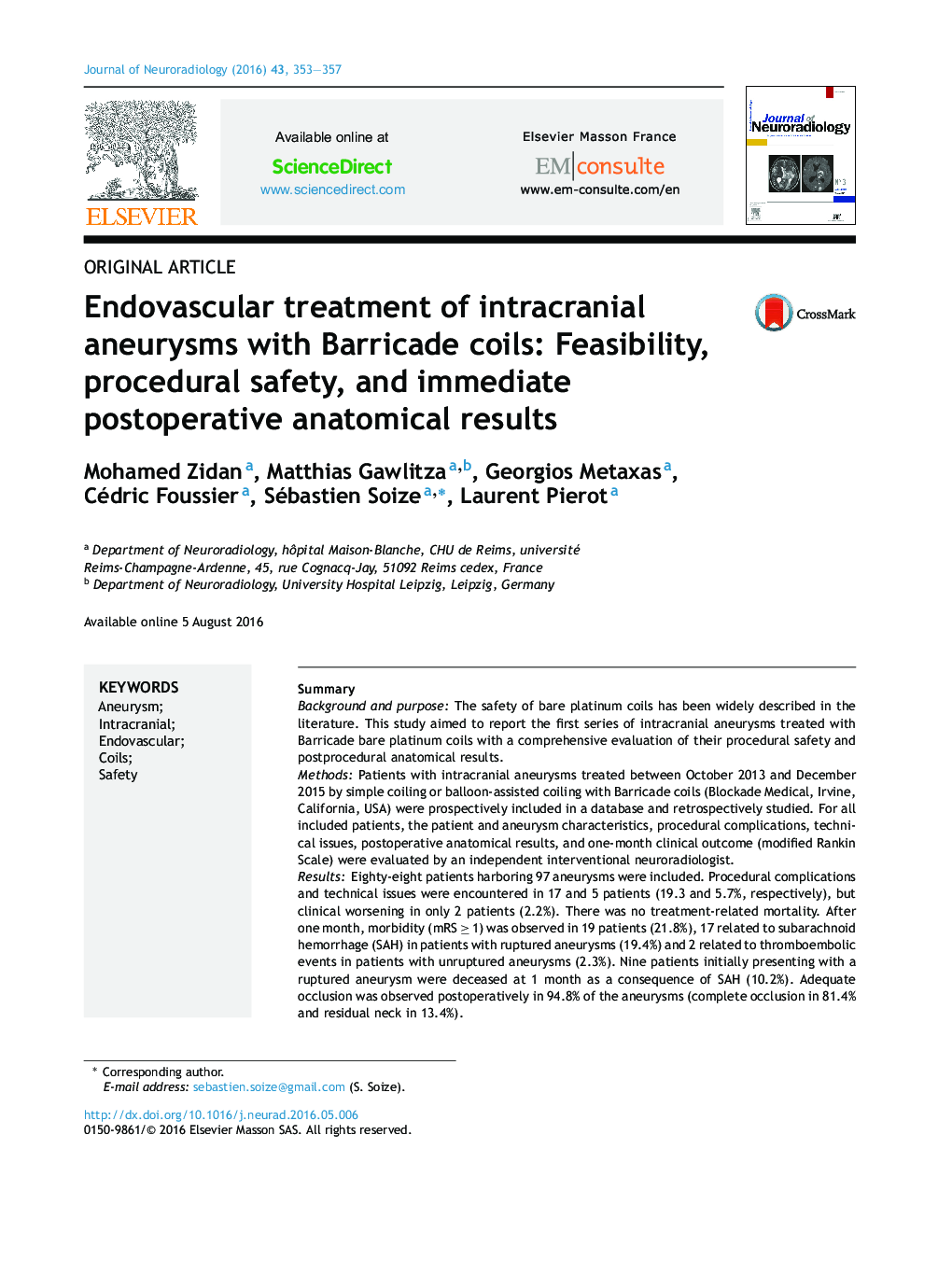| کد مقاله | کد نشریه | سال انتشار | مقاله انگلیسی | نسخه تمام متن |
|---|---|---|---|---|
| 4233427 | 1411596 | 2016 | 5 صفحه PDF | دانلود رایگان |
SummaryBackground and purposeThe safety of bare platinum coils has been widely described in the literature. This study aimed to report the first series of intracranial aneurysms treated with Barricade bare platinum coils with a comprehensive evaluation of their procedural safety and postprocedural anatomical results.MethodsPatients with intracranial aneurysms treated between October 2013 and December 2015 by simple coiling or balloon-assisted coiling with Barricade coils (Blockade Medical, Irvine, California, USA) were prospectively included in a database and retrospectively studied. For all included patients, the patient and aneurysm characteristics, procedural complications, technical issues, postoperative anatomical results, and one-month clinical outcome (modified Rankin Scale) were evaluated by an independent interventional neuroradiologist.ResultsEighty-eight patients harboring 97 aneurysms were included. Procedural complications and technical issues were encountered in 17 and 5 patients (19.3 and 5.7%, respectively), but clinical worsening in only 2 patients (2.2%). There was no treatment-related mortality. After one month, morbidity (mRS ≥ 1) was observed in 19 patients (21.8%), 17 related to subarachnoid hemorrhage (SAH) in patients with ruptured aneurysms (19.4%) and 2 related to thromboembolic events in patients with unruptured aneurysms (2.3%). Nine patients initially presenting with a ruptured aneurysm were deceased at 1 month as a consequence of SAH (10.2%). Adequate occlusion was observed postoperatively in 94.8% of the aneurysms (complete occlusion in 81.4% and residual neck in 13.4%).ConclusionEndovascular treatment of intracranial aneurysms with Barricade coils is feasible and the demonstrated overall safety results are within the ranges found in the literature for other coils. Immediate anatomical results are satisfying.
Journal: Journal of Neuroradiology - Volume 43, Issue 5, October 2016, Pages 353–357
